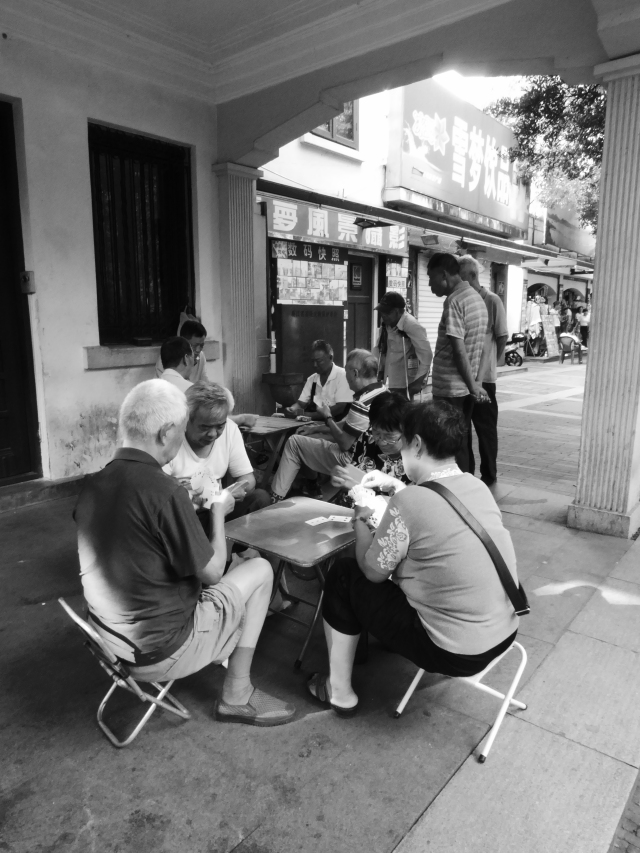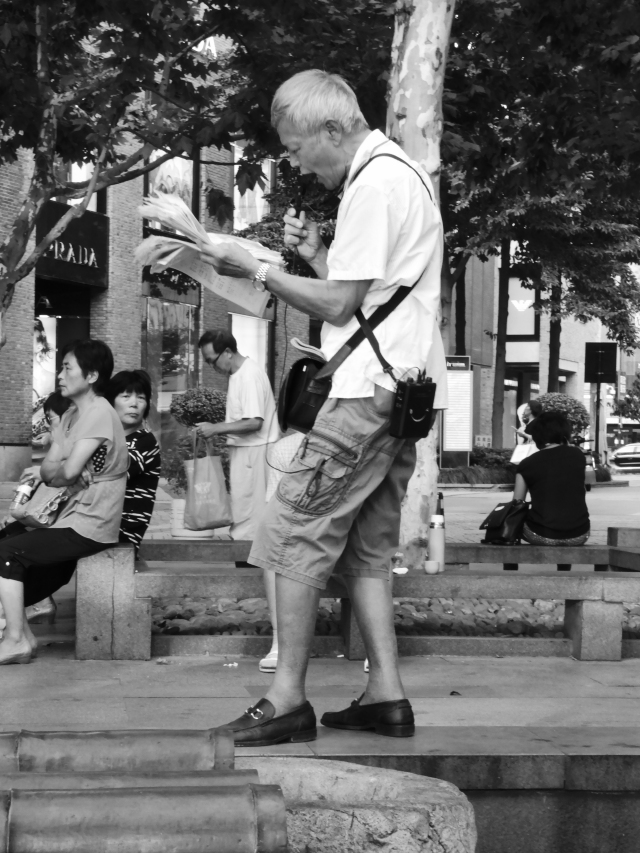-
Recent Posts
Archives
Categories
- arts education
- Bauhaus
- Belle and Sebastian
- Best Video
- Boston
- Brakhage
- Cutler's Records
- Drive
- Getting better
- John Ashbery
- Lincoln Center
- Mekas
- mexico city
- Miracles
- Music
- New York
- On the Road
- poetry
- Quixosis
- ROUNDS
- school
- Sylvanians
- trees
- Tufte
- Uncategorized
- US Constitution
- venue visits
- Visual arts
- Wallace Stevens
- What if this was this
- Whitneyville
- Yale
Blogroll
Bike update
Took bike to Bikeworks for their drop-in DIY Saturday session, with Nigel. 14yh May 2016. Cone rim was worn – pitted with tiny scratches, letting in dirt into the bearing well. Bearings and grease were black. This was why the back wheel hub had play in it. nigel instructed me on stripping back the axle, taking out the bearings, cleaning out the well, putting clean grease and bearings in. He did the tightening: you have to over tighten the locknut next to the dustcap over the bearings, by 1/8 of a turn, tighten the outse nut, then turn the locknut back by 1/8th again.
Also new back tyre and brake blocks. £55 in all, including stand hire.
Posted in Uncategorized
Leave a comment
2 days at the West Lake in Hanghzou… Stunning nature and beautiful people.
Our friend and colleague Muriel Huet, ex of Lampton School in Hounslow, is spending this year travelling, teaching, and learning languages
Muriel's trip around the world
First day. My plan: walk around the lake. 8 hours later, I realise I have walked quarter of the lake. I have lost the track of time. I have stopped every 20 meters. Enjoyed this stunning scenery and watching people. There are old people everywhere. They are singing, mainly local opera, playing music, with traditional instruments, they all have mini acoustic sound systems, playing cards, dancing on Chinese music, in couple, in groups, alone, playing dominos (Pai Gow)… I find it all fascinating. I could watch them for hours. It’s so nice to see so much life around in the parks and streets. 
 I stopped at a group of old men who were playing music with traditional instruments. I stayed a long time… So long, that at one point, the men looked at me, smiled and started to speak to me. I said ‘I don’t understand’ (my favourite sentence) but…
I stopped at a group of old men who were playing music with traditional instruments. I stayed a long time… So long, that at one point, the men looked at me, smiled and started to speak to me. I said ‘I don’t understand’ (my favourite sentence) but…
View original post 471 more words
Posted in Uncategorized
Leave a comment
Paul Willis, Common Culture
In the summer of this year, BFI Southbank will celebrate the world of the teenager on screen, prompted by Matt Wolf’s film Teenage, which itself is based on Jon Savage’s book of the same name. So I’m starting to read things about teenagers and teenage culture.
Paul Willis published Common Culture in 1990. I remember reading it 20 years ago but only recall one phrase – ‘cartographies of taste’, about how young people design their bedrooms as maps of their taste and interests. I’m reading it again, and am going to begin tracking his argument here, as an aide-memoire.
Symbolic creativity. Before work became mechanised, industrialised, it was possible for someone to create in their work in an invested way, where they had agency, skill, some autonomy. In a craft economy. Over the last 100 years, the locus of creative making is more and more in non-work time and space, in play, and in leisure. And rather than being about the kind of physical production that characterised craftwork, this creativity is with symbols.
There’s a parallel story, about how the formal arts have become institutionalised, divorced from the practice of everyday life. The arts are professionalised, in production and in curation and interpretation – those processes which attempt to reconnect the arts with people, and with everyday life.
For Willis, the cultural play, and symbolic creativity of people is most intensely present in the lives of young people – with more time outside work (even young people in work tend to move jobs frequently; they’re less invested in it), with a greater interest in the emergence of their identities, and a more fluid range of social transactions.
And again for Willis, the raw materials of young people’s symbolic creativity come from elsewhere, typically the commodities of mass culture – magazines, fashion, music, photographs. In a nice definition of a closed system, ‘it is from capitalism’s own order of priorities, rules and instrumentalities in production… that informal cultures seek escape and alternatives in capitalist leisure consumption.’ (p19) Capitalism defines our work roles in imprisoning ways, then offers us release through relations we have to buy. But this doesn’t mean we imagine young people to be duped by mass culture: ‘Cultural commodities are catalyst, not product; a stage in, not the destination of, cultural affairs. Consumerism has to be understood now as an active, not a passive process. Its play includes work.’ p18
The dimensions of symbolic creativity: language, the body, and dramaturgy (see Erving Goffman on the essential performativity of everyday life).
The functions, purposes or outcomes of symbolic creativity: to produce individual identity; to participate in social identity; to act, transact, exchange. ‘To change the world even minutely’
Grounded aesthetics. The sensory experiences we encounter every day – that aren’t banal because they’re everyday, or because they’re experienced by ordinary people, or because they don’t arrive as spiritual encounters with great art. Grounded in ‘joy, pleasure and desire, through ‘fun’ and the ‘festive”, as opposed to the ‘high aesthetic’, which he sees as cerebral, decontextualised, ungrounded, abstracted from life, and dependent often on the suppression of pleasure.
The grounded aesthetic experience is often enabled only by skill, what in another environment we would call work: think of the skill in dancing, dressing and hairdressing, music. And a fascinating study in 1978 that found for around 87% of a group 1000 non-apprenticed young manual workers in Peterborough, they exerted more skill in driving to work than they did actually at work. (p14)
Posted in Uncategorized
Leave a comment
Bike Club
Oh the joys of working with your hands. Or in my case, working with someone else’s.. At Bike Club last week, I took my bike in for a do it myself service. To clean stuff up, before the summer holiday, in time for the Autumn grind.
We (it was Jason, helping) took off the chain, with a slip link, then the back wheel. Taking out the skewer, with its quick release lever at the end, we realised the axle was snapped in two – from the simplest piece of evidence: instead of needing retaining nuts (‘cones’) taking off at one end, both ends came out simultaneously. Big problem, said Tomasz, one of the senior Bike Club crew. We were into a rebuild of the wheel hub, which wouldn’t quite be the do it yourself clean up I’d signed up for, or buying a new wheel. Which they didn’t have in stock. So Jason, if he wanted, could show me how to service a rear hub, which he proceeded to do, like this.
You find another axle. Everything is second hand at Bike Club, if you can find it. We needed an axle the same length and diameter as the old broken one (snapped in a strange clean lateral split, not a vertical snap. The skewer snapped a month ago, and a nice man at Evans replaced it for free – but it turns out the whole axle had gone).
We found a matching axle. But then you need to take the retaining nuts and washers – I don’t know why they’re called cones, but I’ll find out – off the original axle, and measure the length clear from each end of the axle, from the thread that the cone starts at. It was seated on the fifth thread at each end.
You take out the ball bearings from the shallow well on each side of the hub. There were 18 – 9 in each. You clean out all the grease from the well, and rub the grease off the bearings. You splodge thumbfulls of pink grease back in the hub well and smear around the inside, then take the clean bearings and slide them into the rim of the shallow well, one by one, until you have 9 in a circle. They slip in nicely, and the last one a perfect fit.
The shallow wells have a rim cover or cap, which should really be undented. You snap that in place over the bearings. You put the cones – a retaining nut, a long washer and another nut – on one end of the axle, and skewer the uncapped end through the hub. Then put the other cones on the other end. The final nut on each end should sit on the 5th thread from the end – exactly the same as on the old axle.
The finicky bit. You have to tighten, but not overtighten, the retaining nuts at each end of the axle. If it’s too tight, the inner retaining nut sits too tightly on the cap pressing against the bearings. And when you spin the wheel on the axle, you can hear the axle grinding against the bearings. But if it’s too loose, the axle has a little play in it, wobbling from side to side.
So you put one end of the axle in a vise, and take two spanners to the other end. You loosen the outer nut, to free up the washer and give the inner nut space to move, then with a second spanner, tighten or loosen the inner nut a quarter turn or less. Then tighten the outer nut, and test the axle for grinding or play, for over- or under-tightening.
After about three goes, you get it right, and then you can put the skewer back in, and sit the wheel back on the rear forks. You’ve just completed a ‘hub service’.
Posted in Uncategorized
Leave a comment
The new bike, Chris
Photos of the handlebar stem, that was seized up, and then freed the Thursday before Christmas, at Bikeworks in Bethnal Green. And then, the Thursday after New Year, we applied the final touches: brakes and cables, leather handlebar grips, new handlebar stem (£5). And, you know, you better be the first to like this!
Posted in Uncategorized
Leave a comment
It’s the Skyfall
It’s the Skyfall. It’s the Skyfall. It’s the SkyFALL. But what is the Skyfall? The ‘house’ in ‘Scotland’? (how can anyone tell the live plate from the matte these days? I so wanted to believe that was a real house, beside a real loch, and Albert Finney was…really Scottish).
Bond seems to sense the factitious/ fictitious nature of his ontology. Halfway through the first act, MI5’s pet psychologist, playing word association football, stumps Bond with ‘Skyfall’ (or was it ‘stifle’?). Bond has his private mise en abime moment; he can’t clench his jaw and grimace his way out of the abyss. Or ride a motorbike out of it.
But he has a lovely moment enjoying-himself-as-Bond in the pre-credit sequence: thrown out of a jeep driven by.. a woman (and the gender politics are pretty much beyond comic or ironic by now) he finds himself astride something hot, throaty and metallic and squeezes out a quiet smirk: ‘Get me. On a motorbike. Again’.
Like the man himself, I realise I’m not convinced by the newly found history/ psychological backstory. Bond is a fictional character. He’s completely made up. As the Sony advert before the film put it: ‘all the on-screen images are invented’.
Posted in Uncategorized
1 Comment
Holy Preposterous Motors
What a word, preposterous. Terence Malick’s Tree of Life inaugurated a new film genre, for me: Preposterous Cinema. Or as Michael Wood put it, in the London Review of Books:
There is a mystery about Terrence Malick’s new movie, but it has nothing to do with life, death and the wonders wrought by the maker of the universe, which are the film’s modest ostensible subjects. The mystery about The Tree of Life is how a work that is truly terrible in so many respects can remain so weirdly interesting.
And so with Wholly Preposterous Motors, a film that brought out involuntary tweet-like spasms of incredulity: it’s Jean Seberg! No.. it’s Kylie! (C’est Kylie.. Kylie.. chants!) Talking limousines! Flower-eating Fu Manchu Man! And equally incredulous questions: Is that Denis Levant’s.. real knob? Are they ..really chimpanzees?
It’s all preposterous, but not all bad; that’s the great thing about Preposterous Cinema – it’s impossible to know the kitsch from the coolly ironic from the dumb from the surreally inspired, and I imagine these impulsive film-makers don’t know either. Like Expanded Cinema, I think it’s a conspiracy to resist the grounds of judgement. (Pablo Larrain’s Post-Mortem it occurs to me, too, preposterous!) Kylie, hanging onto the Samaritaine sign (has it really closed? It’s like realising Harrod’s has been mothballed, but only through a James Bond film), like Paris’s own Hollywood sign, looks like she’s going to repeat many Seine-side suicide bids (Boudu, Paris by Night, The Legend of the Holy Drinker; got any more?), but then hilariously (almost), misses..
Kylie’s song is dreadful, but the casting of Edith Scob is inspired – in a film of one unmasking after another, she was the original masked face in the Franju film. In the final unmasking (‘Your final appointment of the day, Mr. Oscar’) our man goes home to wife and child, in simian domestic bliss – a riposte to Malick’s preposterous origin of life sequence in Tree of Life?
Posted in Uncategorized
4 Comments
Take This Waltz
If films could think, and feel, (and there are people who think they can, and do), then Take This Waltz would be.. afraid of fear. The lead character, Margot, says this is what afflicts her at airports, which is why she’s taken on board in a wheelchair. She says it to Daniel, a man the film, and maybe Margot, has dreamt up and made out of boiler-plate Hollywood man-totty putty. Improbably, he’s sitting beside her on the plane, having just – or in the previous scene – encouraged her to mock-lash an adulterer – a pretend adulterer – in an historical theme park.
I don’t see much contemporary cinema, so I thought Daniel was played by Seth Rogen; it turns out he was the lumpier puttied totty Lou, married to Margot. Margot was played by Michelle Williams-as-Renee-Zellwegger. But all this ‘played by’ stuff belies the film’s biggest lie: it’s a ludicrously scripted and preposterously plotted piece of work, and therein maybe lies its salvation, or saving interest: layers of fantasy, starting with the one that the people, the places and situations they’re in, bear any relation to a known, human reality.
Afraid of fear. That’s the problem. The film’s premiss relies on the risk of Margot giving up the too-comfortable marriage in favour of the riskier fling. But the problem is, when she goes ahead, no-one gets hurt. There’s no real jeopardy. Lou says ‘funny thing is I’m kind of OK’ when Margot is jolted back to sort-of-reality by her sister-in-law falling off the wagon. Drunk driving down the street, the worst Geraldine does is trash a trashcan, as if the film is scared of a real scene.
But there are a few moments of authenticity, jarring with the fantasy-safety of most of the film (the opposite I think of what Phillip French said in the Observer): the scene in the women’s showers, 6 naked women, of all shapes and sizes, dowsing Margot’s ardour with lessons from life; and another dowsing, from Lou, who plans a lifelong joke then has to reveal it, about a faulty shower faucet. And an arresting closing shot, of Margot on a waltzer, spinning through the full chromatic range of disco and fairground lights, not knowing what kind of relationship, or life, or film she’s been caught up in for these past two hours…
Posted in Uncategorized
Leave a comment
No-one looked like Ernest Borgnine
Sorry, John Cooper-Clarke (36 hours). Ernie was born in Hamden, CT, 95 years ago, and is honoured with his own park-cum-grassed-over parking lot outside Stop n’Shop, on the corner of Dixwell and Puttnam Avenues.
Posted in Uncategorized
Leave a comment

